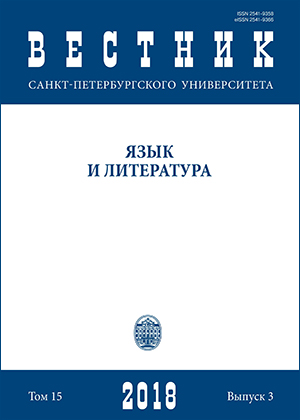Ways of conveying the properties of intertextual insertions when translating from English into Russian (based on the titles of episodes from English-language animated television series)
DOI:
https://doi.org/10.21638/spbu09.2018.307Abstract
This article reviews intertextuality — that is, a text’s ability to fully or partially form its meaning by referencing other texts. First, it gives a brief overview of the basic theoretical framework for researching this phenomenon, starting from the works of Julia Kristeva and Roland Barthes. Afterwards, the author notes that the use of intertextual insertions from English phraseology or widely known works of literature creates opportunities for wordplay, as such insertions tend to undergo structural and/or semantic transformation, which disrupts the linear perception of the narrative, thus both making the audience aware that a different text is being referenced and helping intertextual insertions perform their expressive function. This particular study of intertextuality and its properties is based on material sourced from the English-language television discourse. Therefore, it focuses on the fact that, as headings and titles perform a special pragmatic function, preparing the audience for perceiving the text that follows, intertextual insertions are often used in episode titles of English-language TV series, including animated series, which allows to bolster the viewers’ interest by utilising wordplay and appealing to background knowledge. From the translation studies point of view, however, such intertextual insertions may present a challenge, as the phenomena they reference may not bear any significance to speakers of foreign languages, such as Russian. Thus, the next issue touched upon in the article is the translator’s choice of strategies that might help prompt an equivalent reaction from the Russian-speaking audience. Such strategies may include searching for a different text or language factor that might be meaningful to Russian speakers. As the article reviews empiric material collected from animated television series, special emphasis is given to the issue of taking into account the background knowledge of this medium’s specific audience, which includes both children of various ages and adults.
Keywords:
intertextual insertion, intertextuality, translation studies, translation challenge, film translation, animation
Downloads
References
References
Downloads
Published
How to Cite
Issue
Section
License
Articles of "Vestnik of Saint Petersburg University. Language and Literature" are open access distributed under the terms of the License Agreement with Saint Petersburg State University, which permits to the authors unrestricted distribution and self-archiving free of charge.






